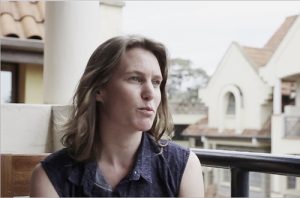 According to the International Fund for Agriculture Development (IFAD) Africa’s 30 million strong diaspora sends home close to $40 billion per year, contributing just over 5% to the continent’s total GDP.
According to the International Fund for Agriculture Development (IFAD) Africa’s 30 million strong diaspora sends home close to $40 billion per year, contributing just over 5% to the continent’s total GDP.
However, very little of this money is used to help fund businesses back home.
Le Lapa, an investment platform connecting global investors with African growth startups is hoping to change this. Le Lapa not only hopes to close this investment gap, but more importantly to address the lack of access to finance present in many entrepreneurial ecosystems across Africa.
The fund was founded by CEO Elizabeth Howard, and American, Jerry Crossan who is head of business development in East Africa in 2014.
Howard is from South Africa and is a University of Cape Town graduate who went on to pursue her Masters and Phd in France. Her doctoral work at Université Paris-Dauphine focused on volatility models in emerging stock markets.
“I realised that I was studying risk management and volatility models that didn’t have any connection to the companies or the risk-taking that I was looking for and as a diaspora African in France, I always wanted to create a link for investment opportunities back home.
“I wanted to create an investment bridge between Europe and Africa and I was annoyed seeing so many Africans in the diaspora not being able to buy shares in companies back home, so I wanted to create that opportunity using new regulations in Europe,” she says.
The Model
Le Lapa is a niche crowdinvestment platform dedicated to African companies. They enable individual investors around the world to access what has largely been untapped investment opportunities on the African continent.
Investors are able to buy shares online in pre-vetted startups and small businesses whose products and services are sold on high growth consumer markets across Africa.
Le Lapa fund uses this model to allow early-stage startups to receive funds from the international community rather than traditional equity funds.
SME South Africa speaks to Howard about why the crowdinvesting model works in Africa and the continent’s need for patient capital.
“The biggest challenge is working with small businesses that have never had exposure to external investors”
Q: Why is the crowdinvesting model especially suited for the African market?
The majority of SMEs in Africa require investment amounts that are very small compared to what the typical equity fund would be able to offer. In fact [most of these businesses need] a very small amount of capital – less than a million euros and some of them as little as 100 000 euros.
This makes it very difficult for funds to work with these small businesses – so the crowd investing model reduces the cost of doing small investments and it reduces the cost in a number of ways both in sourcing and analysing small businesses. After the transaction investors are able to use the technology on the platform to facilitate the relationship between themselves and the business.
The way that it actually brings down the cost of making the investment is an important part of why crowdinvesting could possibly do a good job in the African context.
It’s important for early stage small businesses in Africa to tap into their immediate network, that is how they typically get funded in sort of the Stokvel manner in South Africa or Chama in East Africa – it’s all the same thing. So basically a small business in Africa will approach family and friends or their community for financing and crowd investing. When it works properly it actually allows people to invest in the company through a more formalised process.
Q: Where are you currently operating and why?
Our current deals are all Kenyan. When we are able to ourselves grow our resources, we will head to other countries
Kenya produces amazing entrepreneurs, I must say. There is a wonderful rate of innovation in that country, but also the financial markets regulator is very open to allowing foreign firms to come test new technologies in the country without too many hurdles. They were actually very welcoming to the Le Lapa fund, so was Rwanda and Uganda. They are very excited about the project, whereas coming to South Africa in comparison, and I say this as a South African, has been a lot more complicated to navigate. It was hard to find the right people to speak to, hard to get the regulator to commit resources to it. It was very challenging for a foreign investor to understand exactly what they were up against in terms of putting money in and getting money out. So Kenya was just a nice, transparent easy place.
Q: Who is the typical Le Lapa investor?
In the same way that Kickstarter will attract anyone in the world that wants to invest in a project, crowdinvesting should be able to attract anyone who wants to make an investment – to buy shares in a small African company. However, in practice it is very hard to do.
We have two kinds of investors, the main type are actually funds or what we call institutional investors – they could be from the US, the UK, France, South Africa or Kenya. These funds co-invest in these small businesses and we actually just make the process easier.
The other type of investor is a general public investor who has jumped through all the regulatory and licensing hurdles.
“We are really talking about patient capital, that is not speculative at all, it’s really development capital”
Q: What are some of the biggest challenges of making this model work?
The biggest challenge is working with small businesses that have never had exposure to external investors. So there is a tremendous amount of work that has to be done before any investment deal gets done. And that is why Le Lapa fund has spent almost two years on the ground with our current pipeline of companies, getting them investment ready.
And this is the actual challenge of financial inclusion and it must be subsidised by the state or some sort type of development finance institute, and South Africa has plenty of these.
It really is a big challenge to take these small but exciting companies and convert them into investment opportunities – going through the whole process of due diligence and to get them to start thinking about exit strategies, governance and shareholder relations reporting. All these things are new and can be intimidating for these entrepreneurs. So they do need to be coached through this process.
Q: Why is it only French citizens that can invest as individuals currently?
Basically how French people are able to invest in French companies is thanks to a new regulation basically opening the market for crowd funding. And that just says that these kinds of investment opportunities shouldn’t be restricted to funds or very wealthy individuals. They should be allowed to be invested by anyone provided that those people understand the risks and they are able to handle any financial losses that may arise from their investment.
In South Africa it doesn’t exist yet, in Kenya and other East African countries they are working on a framework to allow locals to invest more formally in local companies, and I believe that in West Africa the conversation has already started.
Q: How long is the typical investment period before the investors start seeing returns?
When it comes to early stage businesses, you are typically not going to raise one round of capital, you are going to raise maybe two or three before they get to scale, this process can take 5 to 10 years.
So, depending on the structure of the company and their maturity, someone can expect to get a return in between 6 or 8 years after the period investment. But we are really talking about patient capital, that is not speculative at all, it’s really development capital, you put in and you help the company work towards its goals to increase the chances of getting your money back at an attractive return.
Q: What do you say to potential investors about why Africa is an attractive market to invest in?
We decided to specialise in consumer goods companies for the moment. So the selling point is that we allow them to get exposure to small businesses that are providing interesting goods including: food, clothing, textiles, beauty and household products and shoes and handbags. These are all sectors that give them exposure to the growth of the African middle class over the next decade. We believe it is quite a defensible investment proposition.
And the caliber of the startup teams really reflect the demographics of Africa. Most of the entrepreneurs are younger than 30-years-old and they are all providing a different type of investment opportunity to your more traditional family-owned, long-standing SMEs in Africa, so this is a much more innovative group of entrepreneurs.
Q: Are you able to share with us any success stories?
I am not allowed to mention any names, but I will tell you that our consumer goods companies will resonate with people of our generation.
The first one is a luxury handbag company in Kenya run by Kenyans and former French leather brand artisan. He was able to bring a really high level of skills set and he trains Kenyans just outside Nairobi to produce 100% Kenyan leather handbag. He wants to show the world that Kenya is capable of producing top luxury.
One of the other companies is doing a range of hair products for natural hair, plugging into a growing sector coming out of the US, South Africa and actually worldwide. They found that most of the hair products that Africans are using are imported, even though the raw ingredients were coming from East Africa. So they decided that they would make a local brand. They have shampoos, curling and styling butters, and it is selling like hot cakes all over Kenya because it is selling for just a little less than imported alternatives.


